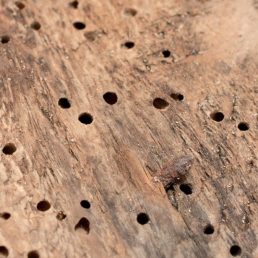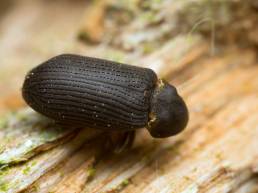How does woodworm occur?
Wood destroying insects, or beetles are commonly known as “woodworm” due to the beetle beginning life as a larva.
Eggs are laid by female insects, usually in cracks, splits and/or pores of the wood. The eggs are very small, often invisible to the unaided eye. The eggs usually hatch within a short period of laying.
The larva hatches from the egg and it is at this stage where most of the damage to the timber occurs. The larvae stage varies in duration from a few weeks, to many years depending on the species. In most timber insects, it is the longest-lived stage.
Eventually the larva undergoes a dormant period. During this period the larva ceases to feed and profound changes in form and structure occur (metamorphosis). This is known as the Pupa stage. The Pupa resembles a mummified, pale yellow beetle covered with a transparent skin, which darkens in colour as the time for adulthood emergence approaches.


The Stages
At the completion of metamorphosis, the adult insect emerges from the Pupal skin. It bores its way out of the timber, leaving an exit hole which is usually round or oval in shape, varying in size according to the species of insect. These exit holes are usually the first visual sign of infestation.
Emergence of adult insects from timber may sometimes be delayed for a period of months after metamorphosis.
Treatment
The moisture content of timbers would usually be in excess of 20% for an insect infestation to occur.
If caught early enough, ie, prior to the loss of structural integrity then timbers affected by insects can be chemically treated.
Treatments vary according to the purpose of the affected timbers. Structural timbers such as roof purlins and structural beams are often treated with a deep penetrating paste.
